Malaysia Airlines operates 6 Airbus A330-200s that are the oddballs of the fleet. These are former Air Berlin aircraft acquired in 2018, following the German low-cost carrier’s bankruptcy. At the time, Malaysia Airlines needed to quickly boost capacity and range, and these secondhand jets were the most convenient solution. In the 7 years since, the A330-200s have operated a mix of regional flights, long haul flights to Auckland, and Hajj charters to Jeddah. Many have described their onboard experience as uncomfortable, as the airline was selling a product originally fitted for a low-cost carrier.
The A330-200s will gradually be returned to its lessors as Malaysia Airlines takes delivery of new A330neos. Delivery delays mean that the airline is planning to hold on to 2 of the A330-200s just a bit longer. As of now, 4 remain in service on regional routes. I had the chance to fly on one of them in Economy Class on my return flight from Taipei to Kuala Lumpur, and it quickly became clear why these aircraft have a poor reputation among passengers.
Departure from Taiwan Taoyuan International Airport (Terminal 1)
Malaysia Airlines’ once daily service between Kuala Lumpur and Taipei flies from Terminal 1 at TPE, which is the original terminal that opened in February 1979. It underwent a major refurbishment in 2012 which gave the terminal a much needed 21st century update. While the updated terminal looks great, the refurbishment hid the original’s architectural features that were inspired by Eero Saarinen’s work at Washington Dulles.
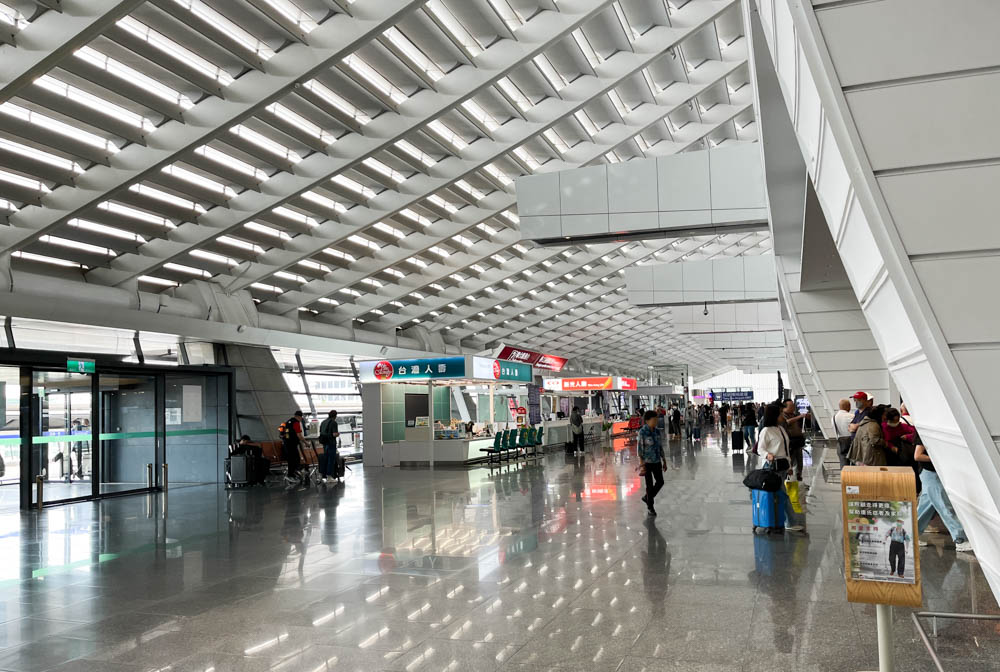
I arrived at the check in counter shortly before it opened, and joined the long line of passengers who also decided to arrive at the airport early. Only 5 counters were in use for Economy Class passengers, of which 2 were for online check in baggage drops, and so I endured a 30-minute queue before my bag was checked in.
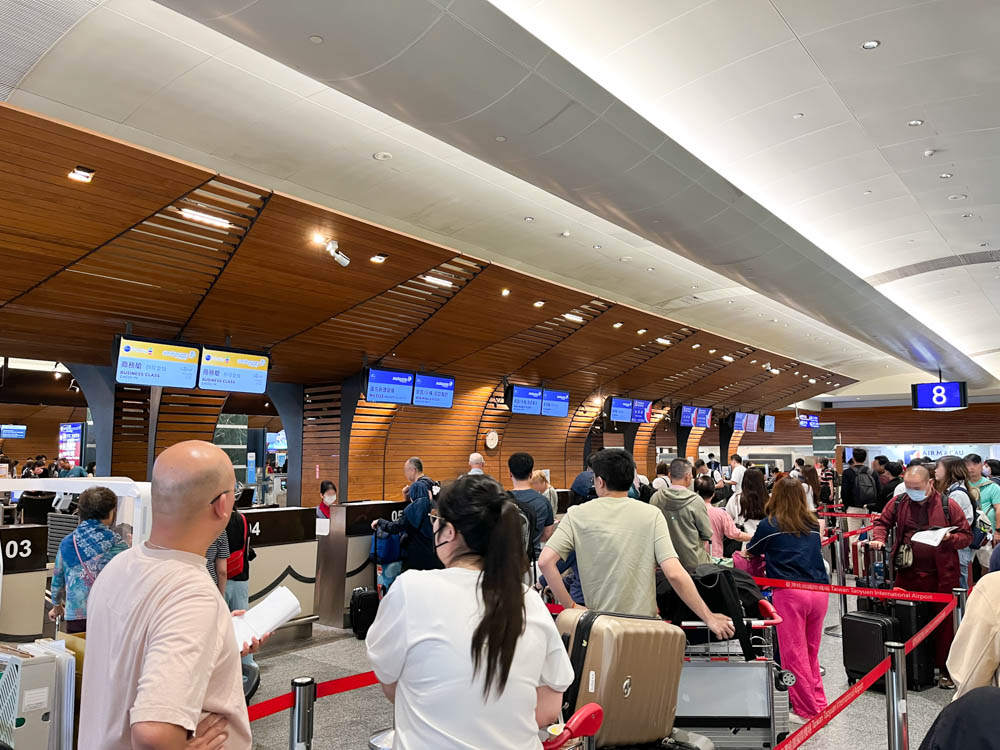
The security and immigration process moved much faster and I was at my boarding gate in no time at all. I liked how TPE’s layout was quite navigable, and how each boarding gate was given individual themes. My gate A4, for instance, was given a hand painted butterfly theme.
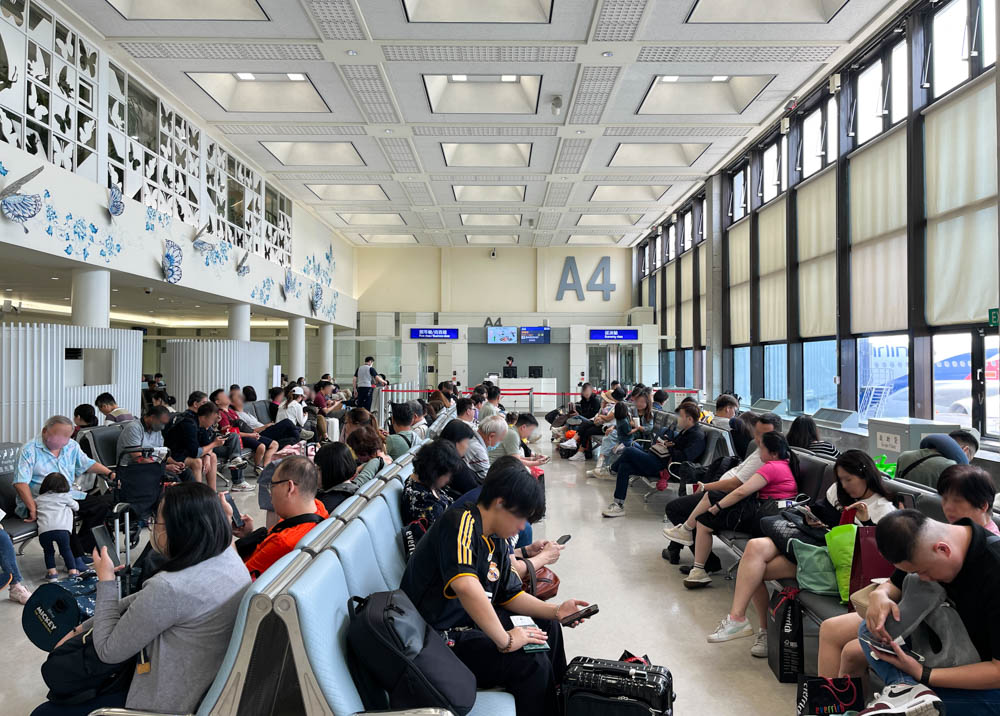
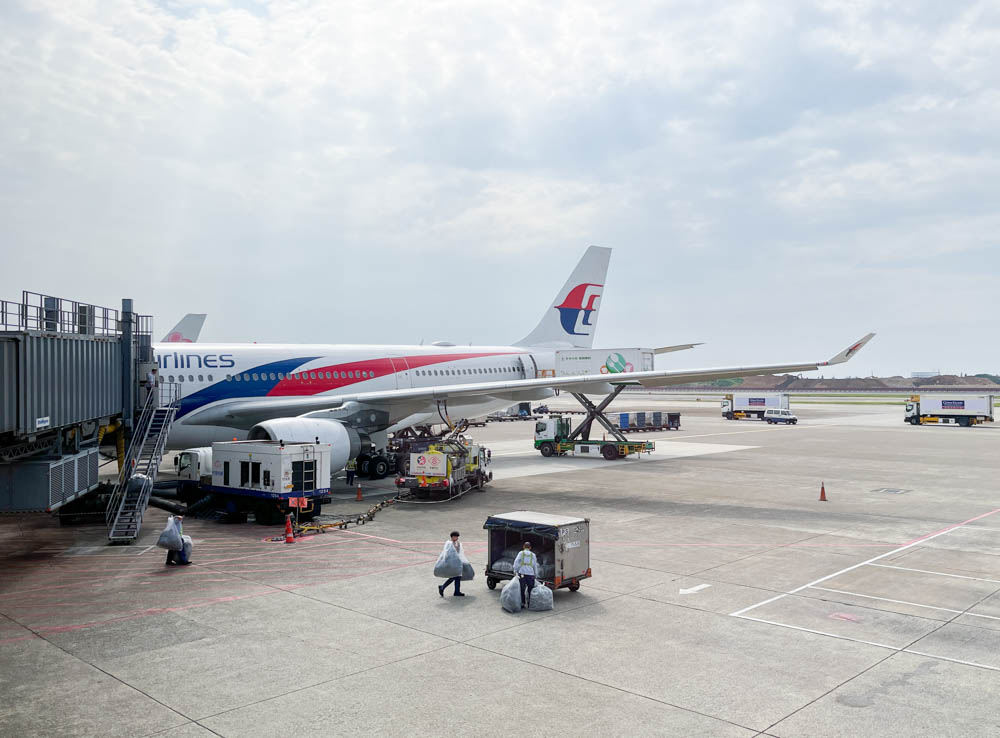
Malaysia Airlines had notified me earlier in the morning of a 30-minute delay to my flight due to the aircraft’s late departure from Kuala Lumpur as MH 366. My MH 367 departure ended up being delayed even further as we boarded the aircraft during the revised departure time.
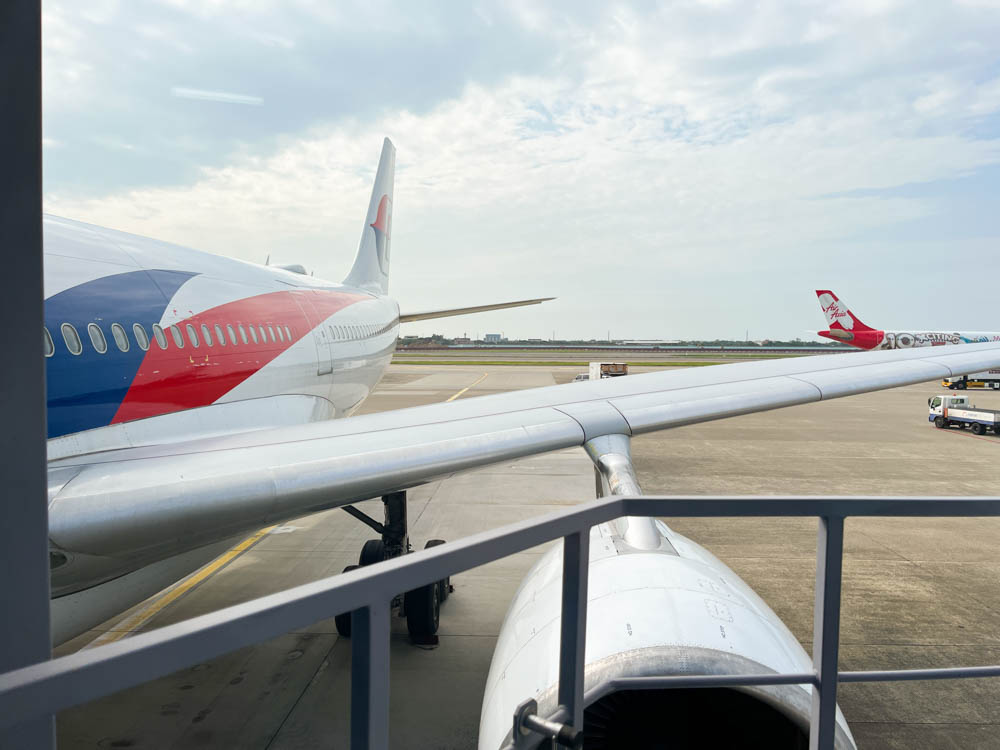

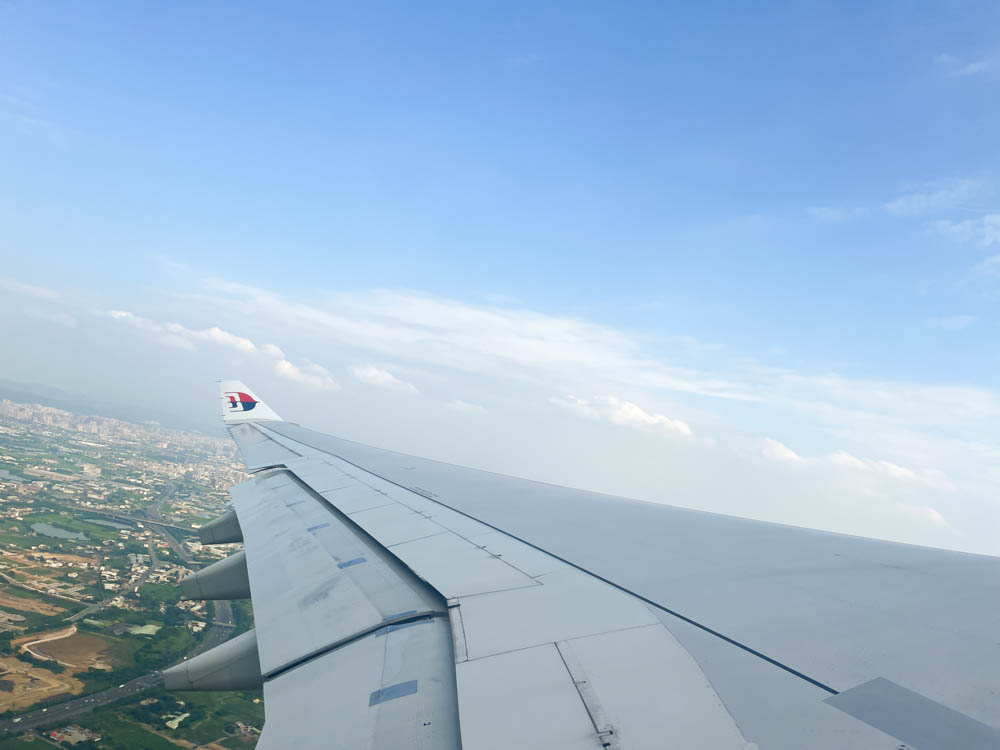
We then sat for a bit longer after boarding was completed before we pushed back. In total, the flight departed 54 minutes late.
Onboard Cabin & Amenities
Malaysia Airlines’ A330-200s are equipped with 19 seats in Business Class, and 268 seats in Economy Class. All 6 aircraft in the subfleet retain their original Air Berlin interior with the exception of 9M-MTY, which received a mild refresh (new seat covers and cushions). My aircraft for the day was 9M-MTW, which looked very much like it did when it exited the Air Berlin fleet.

Malaysia Airlines A330-200 Economy Class
Economy Class onboard Malaysia Airline’s A330-200 are laid out in a 2-4-2 configuration, which makes it slightly more spacious than other airlines with A330 cabins laid out in 3-3-3. The seats are an older Recaro seat model with a generous 36 inches of pitch in rows 14 to 19, and a tighter 30 inches of pitch in rows 20 to 50.
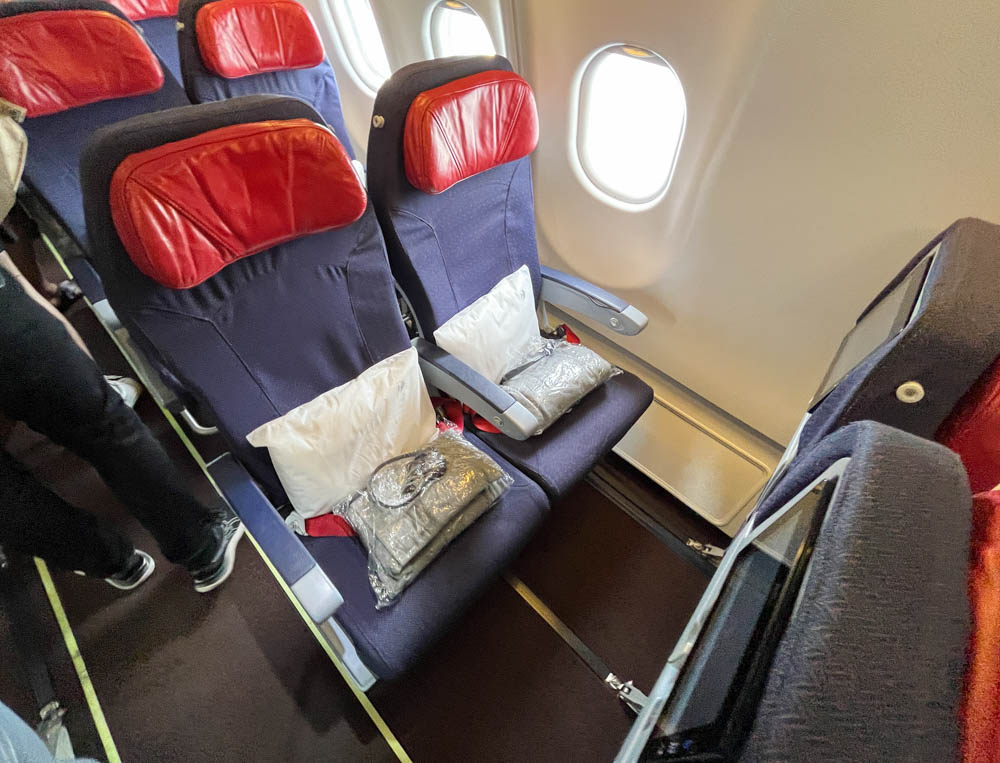
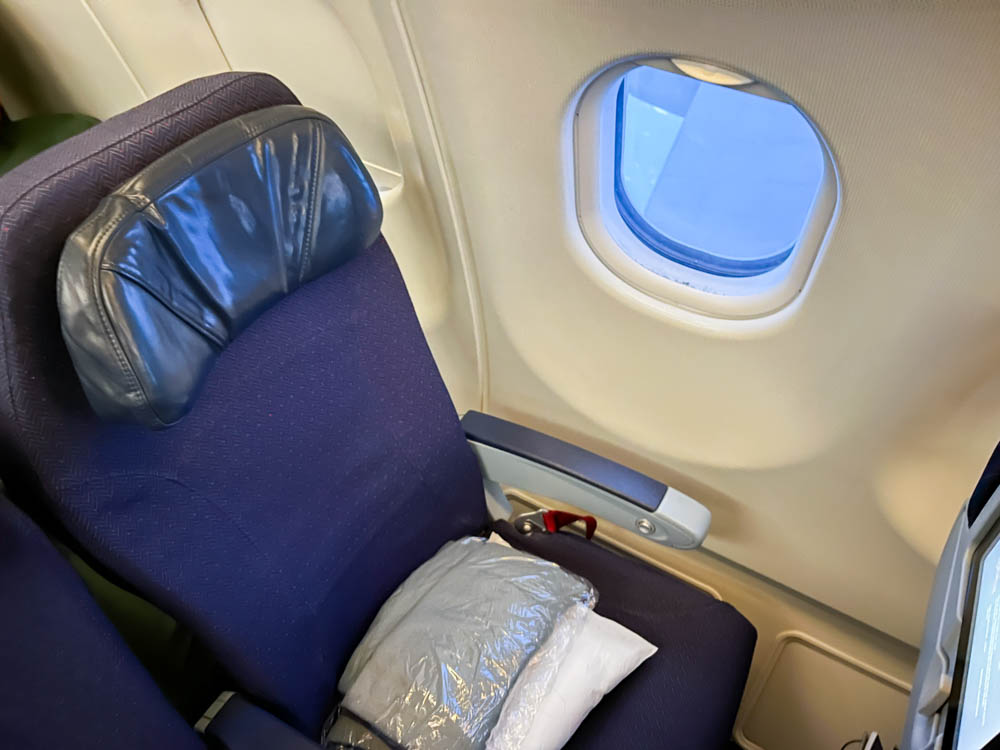
All seats feature a 10 inch touch screen IFE display, and a USB A socket. There is supposedly a 115V AC socket as well, but I couldn’t locate it in the usual position between the seats. A pillow (with single use covers), and a plastic wrapped blanket was already placed on each seat during boarding.
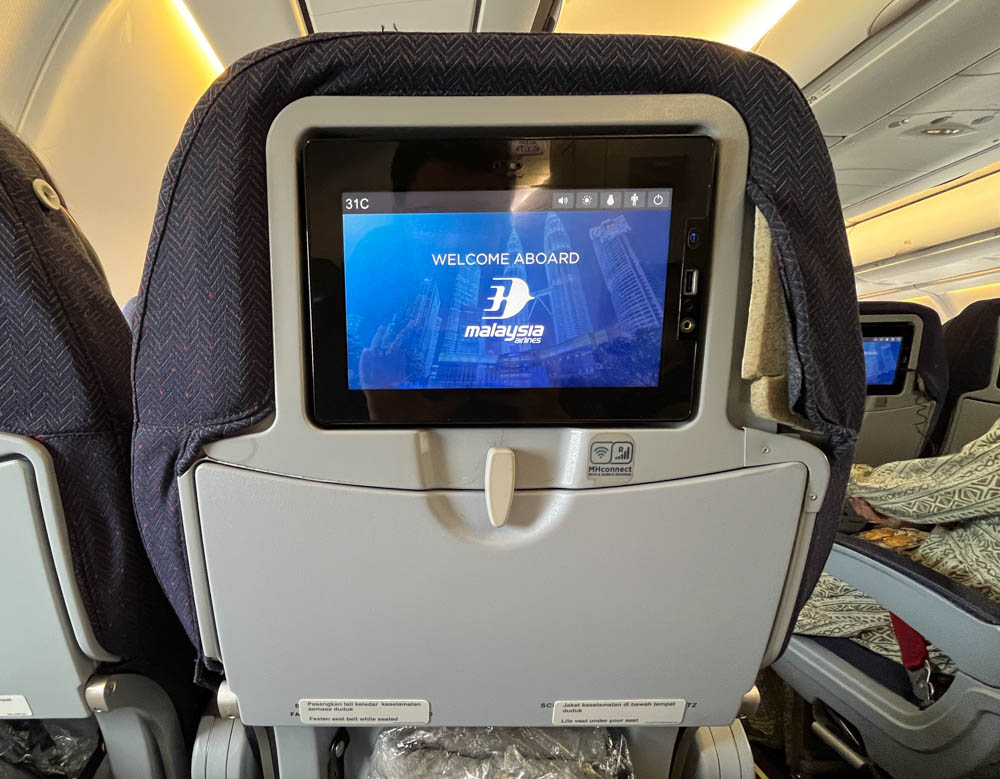
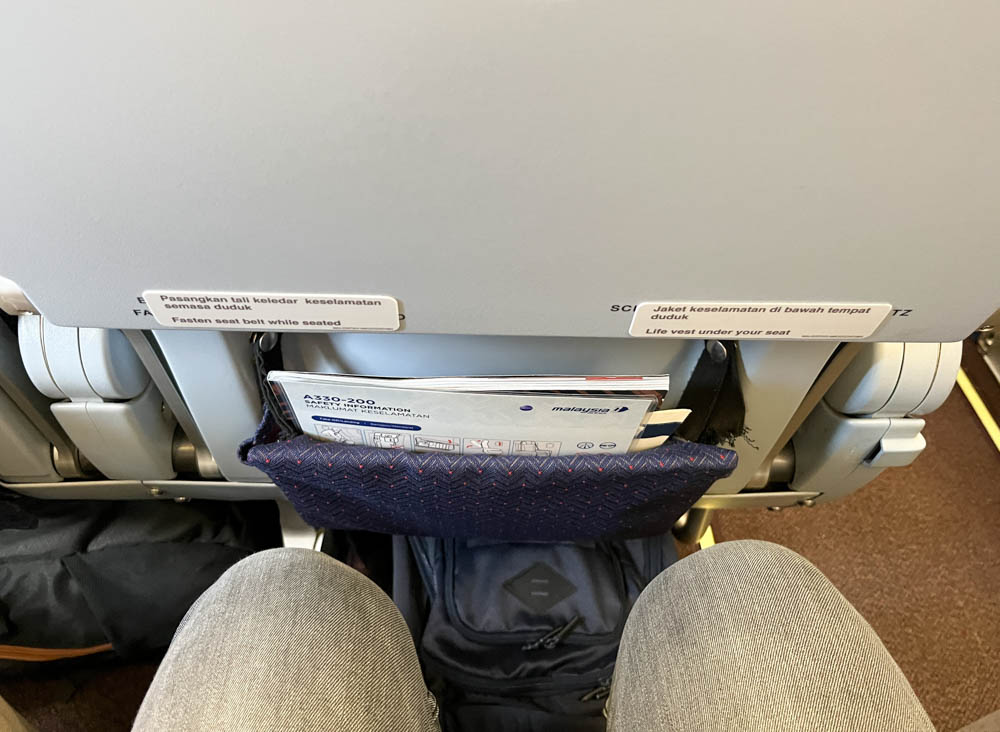
That’s about all the nice things I can say about the seat. These seats are clearly old, worn out, and completely unsuited for Malaysia Airlines’ premium positioning. The backrest was very flat, lumbar support felt non-existent, and the legroom was quite tight and would be quite uncomfortable for anyone taller than 170cm. The seat’s headrest was also flat and offered very little support.
I did not enjoy this almost 5-hour flight back from Taipei on this aircraft. The flat backrest made it difficult to find a comfortable position, and I kept subconsciously sliding down in the seat to try and get comfortable. It didn’t work, and I stepped off the plane with a slightly strained back. If that sounds bad, just remember that these planes used to operate the 10-hour flights to Auckland. The cabin crew on this flight were great as usual, but there’s only so much they can do in a cabin like this.
Malaysia Airlines A330-200 Inflight Entertainment
The aircraft was fitted out with Air Berlin’s original IFE system, but with Malaysia Airlines’ branding and content library installed. The content library was adequate for a regional flight, and I continued my Lord of the Rings saga with a viewing of The Two Towers during the flight.
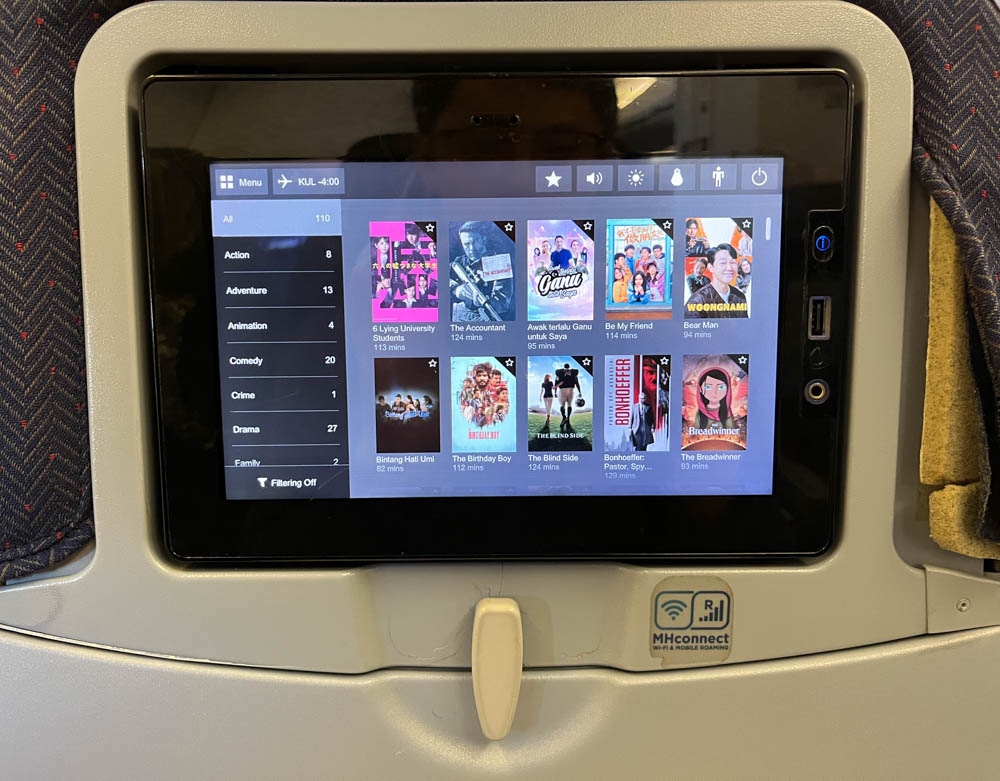
The IFE system is also where the aircraft’s age is obvious. The touch screens did not register all of my taps, and the right side of the touch screen was unresponsive. Pausing my movie also required multiple taps, which was quite annoying. The IFE system also had to be rebooted on the ground, requiring the crew to perform the safety demonstration manually.
To be fair to Malaysia Airlines, they can hardly be faulted for the flaws of a system originally designed for another airline. But we can be critical of the fact that these cabin products are used on key sectors where first impressions are important. Passengers will remember if the cabin is fitted out with faulty screens and dated interiors, especially if they’ve paid the premium to fly with a full service carrier like Malaysia Airlines.
Malaysia Airlines A330-200 inflight Wi-Fi
I was surprised to learn that this aircraft was fitted with inflight Wi-Fi, but the excitement didn’t last because I not able to connect to the Wi-Fi at all. I won’t hold this against the airline as I prefer to be disconnected while flying. But I imagine it would be frustrating for passengers who expect to stay connected during the flight.
Onboard Catering
Malaysia Airlines TPE-KUL Lunch service
The crew went round with a choice of drinks and peanuts shortly after departure, followed by a late Lunch service about an hour after. The options were Butter Chicken with Rice, or Seafood Noodles. I opted for the Butter Chicken with Rice, which was served on a tray alongside cut fruits, a red-bean dessert, a bread roll with butter, and a bottle of water. Alcohol was available, but I opted for Coca Cola instead.

As on my outbound flight to Taipei, the meal on this flight was excellent. The Butter Chicken was delicious, and I liked that the meal was balanced with a good amount of vegetables. It wasn’t gourmet, but felt like a regular weekday lunch that was enough for a regional flight within Asia when done well.
Arrival in Kuala Lumpur International Airport (Terminal 1)
We descended into Kuala Lumpur and made our final approach under the night sky. Thanks to our delayed departure from Taipei, we ended up arriving around 40 minutes late.
Final Thoughts
This flight was a textbook example of a strong soft product being undermined by an outdated hard product. The crew, catering, and service were excellent, but the cabin itself was long past its prime. Malaysia Airlines is clearly banking on its new A330neos to elevate its regional and long haul offerings, but until they arrive in sufficient numbers, passengers will continue to encounter these ageing cabins.
Leave a Reply